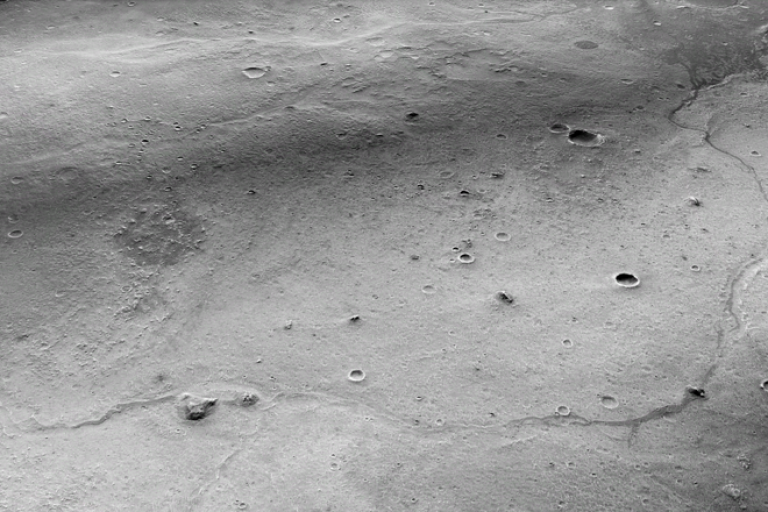Ancient rivers increase chances of finding life at next Mars rover's landing site
23 November 2022
Research led by Birkbeck Lecturer in Planetary Surfaces, Dr Joel Davis, investigates the geology of Oxia Planum, the future landing site for the ESA ExoMars rover. They find evidence for widespread rivers across the region, which likely formed billions of years ago.

Rivers as wide as 600 metres once meandered across the surface of Mars – according to new research from Birkbeck, The Open University, The Natural History Museum, Imperial College London, and the University of Bern.
The research team say this discovery is important because these are some of the oldest rivers in the Solar System and they are found at Oxia Planum, the landing site of the upcoming ExoMars Rosalind Franklin rover mission, due for launch in 2028. The findings increase the likelihood that the rover will find evidence of ancient life on the Red Planet.
Lead researcher, Dr Joel Davis, Lecturer in Earth and Planetary Sciences at Birkbeck, commented: “Using high-resolution images and other data acquired from orbiting satellites, we are able to see robust evidence of traces of rivers preserved in the landscape on Mars. We have observed long ridges up to 70km long on the surface of Mars, which we interpret as being formed by rivers that were active billions of years ago.
“The next rover to land on Mars is scheduled to be the Rosalind Franklin rover, part of the European Space Agency's (ESA) ExoMars mission, which will test out our theories. The rover will look for signs of life in the rock record by drilling two metres below the planet’s surface and collecting samples. The proposed landing site, Oxia Planum, is unique as it will be the oldest part of Mars that has ever been landed on – to put this into context, it is probably over 500 million years older than the Jezero crater currently being explored by NASA's Perseverance rover. This is an exciting prospect because we don’t have such ancient rocks on Earth, so we will be investigating some of the oldest river deposits in the Solar System. Billions of years ago, we think that Oxia was covered by extensive rivers and floodplains.”
Professor Matthew Balme of the Open University, the second author of the paper, said: “We have been working to understand the geology of the landing site for the Rosalind Franklin rover for several years now, but it’s only been the recent addition of more high-resolution images from the NASA HiRISE camera and amazing new colour data from the European Space Agency (ESA) CaSSIS camera that has allowed us to see these river systems in detail. What is clear in this new data is the relationship between the part-buried river channels, and the sedimentary rocks that make up the wider landing site area. The river deposits are clearly embedded in these extensive sedimentary deposits, which means that in just a few years’ time the Rosalind Franklin rover could be exploring rocks laid down in rivers more than three and half billion years ago.”
Dr Peter Grindrod, Research Leader, Earth Sciences at the Natural History Museum and co-author on the paper added: “This is a really exciting time to be involved in the exploration of the Solar System, and particularly Mars. By visiting the deposits from these ancient rivers, we hope to investigate a unique landing site that should be unlike anything that we’ve seen before. Once there, we will be closer to determining if life ever existed on Mars.”
The findings are part of a multi-year effort by UK and international researchers to investigate Oxia Planum prior to the rover landing. This work was funded by the UK Space Agency through the Aurora programme.
‘Ancient Alluvial Plains at Oxia Planum, Mars’, was published in Earth and Planetary Science Letters on 22 November and is freely available to read online.
Links
- Original article on Birkbeck website
- Research paper: Joel M. Davis, Matthew R. Balme, Peter Fawdon, Peter M. Grindrod, Elena A. Favaro, Steven G. Banham, Nicolas Thomas, Ancient alluvial plains at Oxia Planum, Mars, Earth and Planetary Science Letters, Volume 601, 2023, https://doi.org/10.1016/j.epsl.2022.117904
- Dr Joel Davis' academic profile
- Dr Joel Davis' website
Image
The surface of Mars - credit: NASA/JPL/MSSS/Peter Grindrod
 Close
Close

